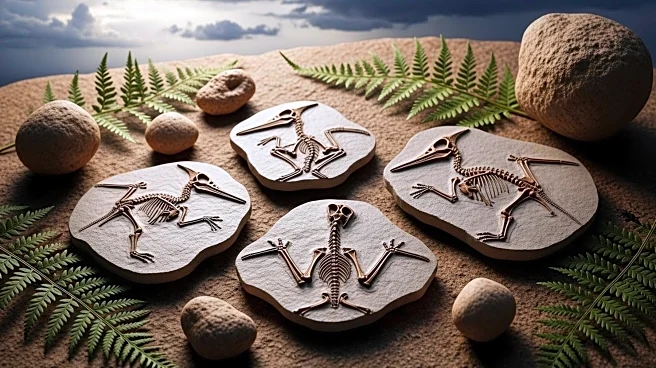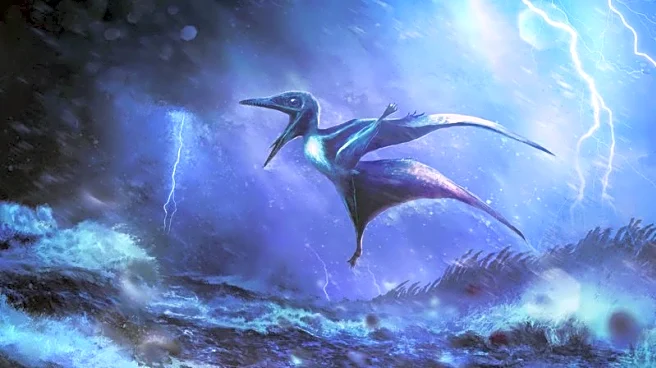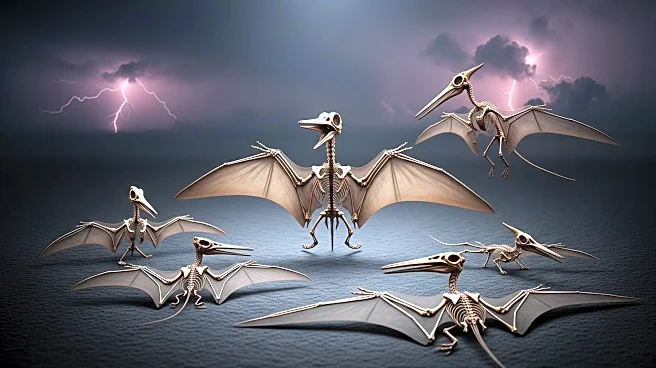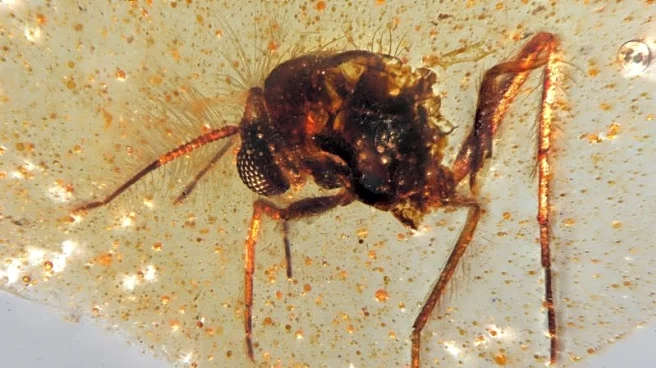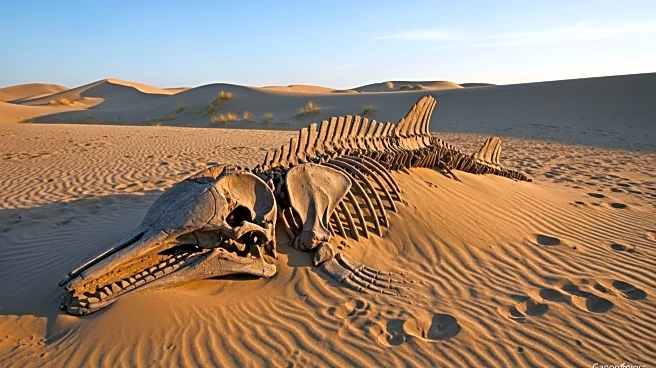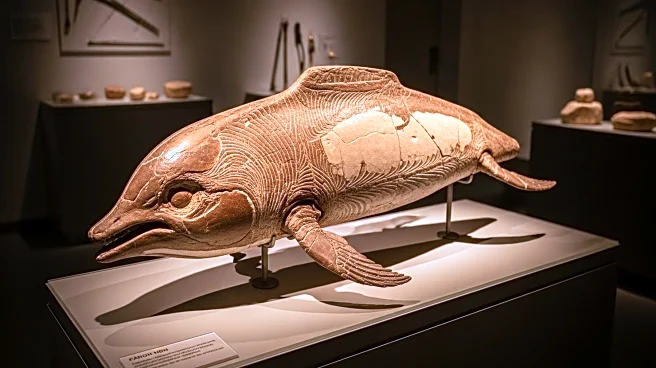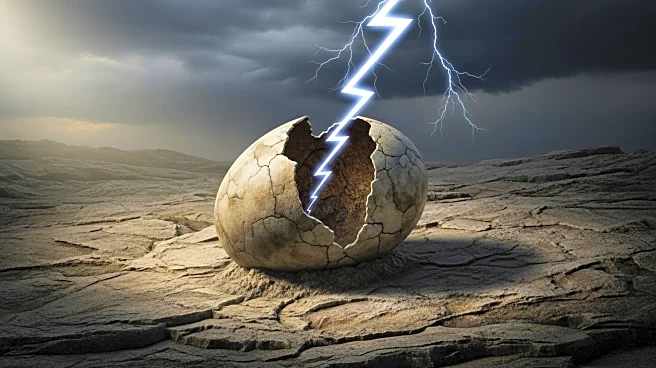What's Happening?
A recent discovery in southern Germany has provided scientists with a rare glimpse into the lives and deaths of young pterosaurs, ancient flying reptiles that lived approximately 150 million years ago. The fossils, nicknamed Lucky and Lucky II, were found in a lagoon where they were preserved in remarkable detail. These juvenile pterosaurs appear to have perished during a violent storm that swept them into the lagoon, where their bodies were quickly buried and fossilized. The fossils show wing fractures, suggesting that strong gusts of wind may have caused the young pterosaurs to crash into the waves. This discovery sheds light on why juvenile specimens are more common in the fossil record than adult ones, as storms likely skewed the preservation process. The research, led by Rab Smyth from the American Museum of Natural History, utilized ultraviolet light photography to reveal hidden details in the fossils, providing new insights into the flight capabilities of these ancient creatures.
Why It's Important?
The discovery of these pterosaur fossils is significant for paleontology as it offers new insights into the life and environmental challenges faced by these ancient creatures. Understanding the preservation process and the impact of storms on fossil records can help scientists reconstruct prehistoric ecosystems more accurately. Additionally, the findings challenge existing theories about the flight capabilities of juvenile pterosaurs, suggesting they may have been able to fly shortly after birth, unlike most modern birds and bats. This research not only enhances our understanding of pterosaur biology but also contributes to broader discussions about the evolution of flight in vertebrates. The study highlights the importance of interdisciplinary approaches, combining paleontology with advanced imaging techniques, to uncover details that were previously hidden.
What's Next?
Future research may focus on further examining the Solnhofen Limestone deposits to uncover more fossils that could provide additional insights into the life and environment of pterosaurs. Scientists may also explore other regions with similar geological conditions to compare fossil preservation patterns. The findings could lead to a reevaluation of how storms and other environmental factors influenced the fossilization process in different prehistoric periods. Additionally, the study may inspire new investigations into the flight capabilities of other ancient flying reptiles, potentially leading to discoveries that could reshape our understanding of vertebrate evolution.
Beyond the Headlines
The discovery of these pterosaur fossils not only contributes to scientific knowledge but also raises questions about the ethical considerations of fossil excavation and preservation. As researchers continue to uncover ancient remains, there is a growing need to balance scientific exploration with the conservation of natural heritage sites. Furthermore, the study of ancient life forms like pterosaurs can influence cultural perceptions of evolution and the interconnectedness of life on Earth, fostering a deeper appreciation for biodiversity and the history of life.

